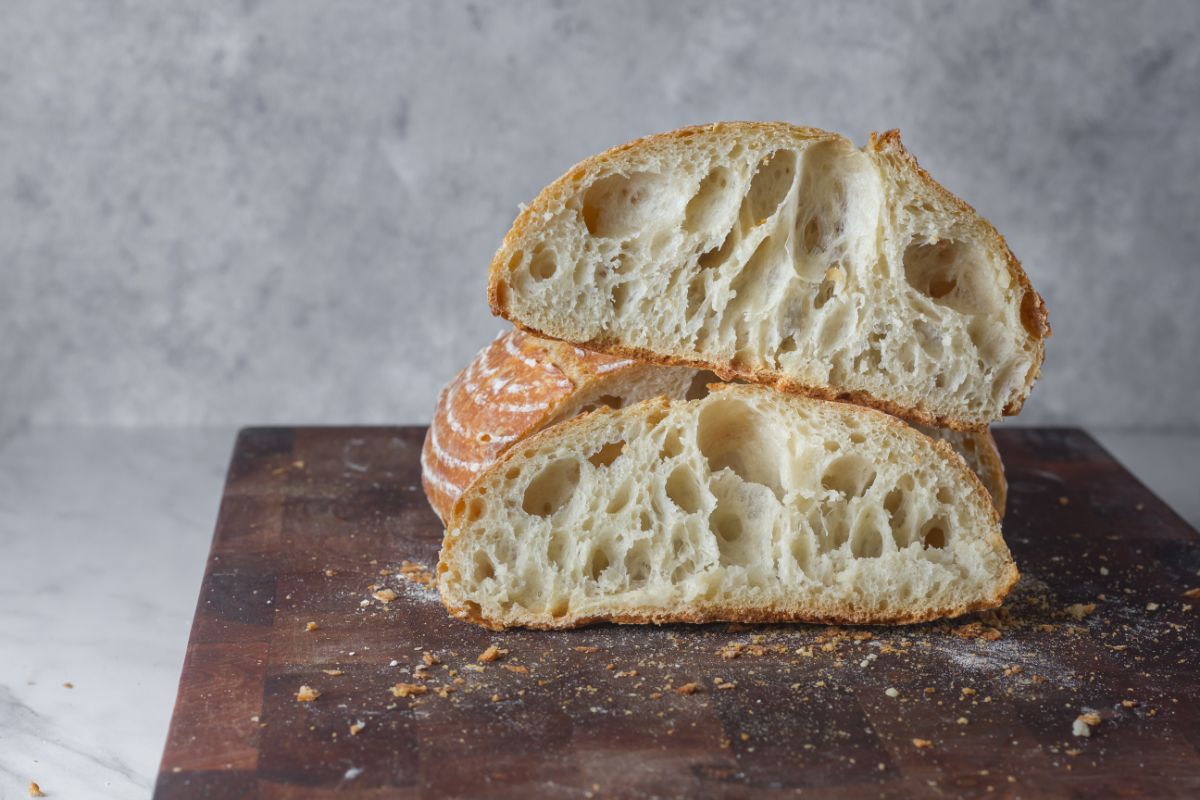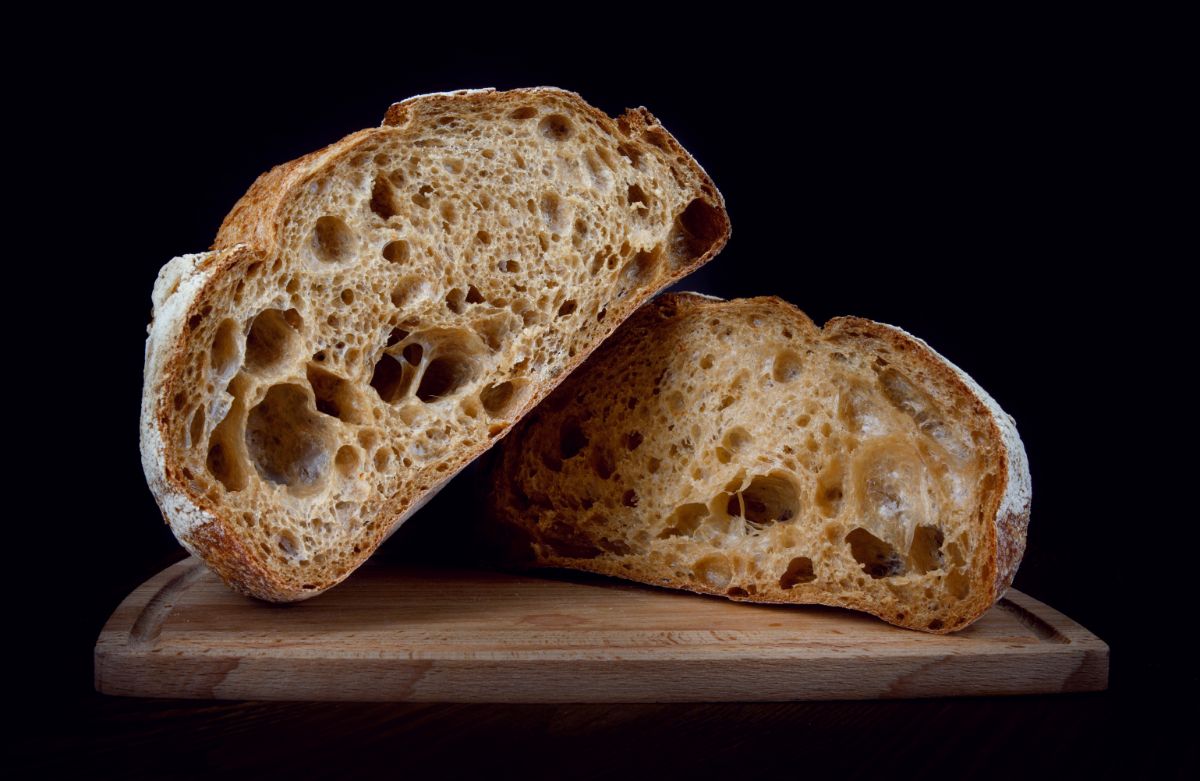Baking bread is one of the best ways to get your kitchen smelling wonderful. The aroma of a loaf of bread baking can make your mouth water.

But what happens when the timer goes off, the bread looks great, it’s firm and brown, but when you go to slice the first piece, you discover the inside is raw.
How does bread come out raw in the middle from a perfectly heated oven?
If Bread Comes Out Raw – Use a Thermometer
You may set the dial on your oven to the right temperature setting, but are you sure it is reaching the heat it needs to bake your loaf of bread thoroughly? Your best solution to determine if heat is the problem behind your inside-raw loaf is to check the heat level of your oven.
Use a thermometer to determine the internal temperature of your oven. A lot of times if the loaf is coming out brown and looking thoroughly baked, it has baked in an oven that is running too hot.
Home ovens can be off their correct temperature setting by 50 to 75 degrees.
You can also check the internal temperature of your bread. This temperature check is performed the same way you would check a baked chicken or turkey.
When you insert a thermometer into a loaf of bread, it should reach 180 to 190 degrees Fahrenheit for a soft loaf. If you are baking a leaner, crusty bread, it should reach a temperature of 200 to 210 degrees Fahrenheit.
When you check the internal temperature of your loaf, insert the thermometer into the underside, so you avoid unsightly holes. You want to leave the thermometer inserted until it completely comes to a stop.
Another temperature issue can occur with larger ovens and baking stones. Some of the larger ovens need a longer preheating time.
If baking with the baking stone, it also requires a longer time to preheat.
Wrong Flour Measurements Can Cause Bread to be Raw Inside
A common mistake made in making bread is how flour is added to the dough. You do not want to spoon your flour into the measuring cup.
Spooning flour can make it become too tightly filled and can cause your dough to be too wet. If your dough is too wet, it will give you a center of bread that doesn’t bake properly.
When measuring your flour, you should use the scoop-and-sweep method.
Is it Safe to Eat Bread if Raw in the Middle?

We all know raw dough can make us sick, but what happens if the loaf is raw in the middle, or under-cooked, is it safe to eat? If the bread is a quick bread and the recipe includes milk or water, you can eat it if it is not completely cooked inside.
When a recipe doesn’t contain eggs or raw yeast, chances are an underbaked quick bread won’t make you sick. It is a different answer if there are different ingredients.
Some recipes call for ingredients such as water and yeast, but not eggs. In these products, if they come out of your oven underbaked, you could eat some of them, but only in moderation. Raw yeast is not recommended for consumption, but in small amounts should not make you sick, but may cause mild stomach discomfort.
If your recipe consists of raw flour and eggs, it should not be eaten if underbaked. Raw flour can contain E Coli bacteria, and raw eggs can contain salmonella.
So, if your bread has either of these ingredients and comes out with a raw middle, you should not eat it. There are ways to fix an underbaked loaf of bread with a raw center.
How to Salvage Bread with a Raw Middle
To salvage an underbaked loaf of bread that has come out of your oven looking fantastic, but raw in the middle, you can still make it into a decent loaf of bread.
Make sure your oven is heated to 350 degrees Fahrenheit and place the bread back into the oven for approximately ten to twenty minutes. This process should work to finish cooking the inside, even if you have cooled the loaf.
If your bread has not been set before you turn off the oven, there are no solutions to this problem. One way this problem can occur is if you push the wrong button on your oven and instead of turning on the timer, you turn off the oven.
You don’t realize the mistake until later. You can try to bake it at this point, but the truth is it makes a difficult loaf of bread to swallow.
Make Sure Bread is Cooled Properly
Don’t mistake your bread as undercooked if it has not been properly cooled. You have to allow your loaf of bread to cool for at least two hours before you cut into it.
If you cut into an improperly cooled loaf of bread, it will appear soggy. This soggy appearance will occur even if the loaf has cooked all the way through. Sweating of a loaf as it cools will make the crust softer, but it does regain a hardness once completely cool.
Par-Bake a Loaf of Bread
Some want a fresh loaf of bread for a special occasion but know they will not have the time before the event to make and bake one completely.
You have an option of par-baking loaves of bread so you can serve them whenever you choose. To par-bake a loaf, bake it for ninety percent of it required baking time, then cool it completely. Once cooled, wrap the loaf tightly in saran wrap, and freeze it.
The day before you plan on eating or serving the bread, take it out of the freezer and unthaw it in your refrigerator. You can finish the baking process by adding just a few minutes to the time called for in the recipe and have a freshly baked loaf of bread to place on the table.
Making sure your bread is fully baked before serving or eating is important. Most bread contains ingredients that will make you, your family, or your guests sick if the middle of a loaf is raw.
One good way to check if your bread is underdone is if the whole crust is not nicely browned. Fully baked bread is the best part of a meal, use the method you feel safest with to ensure your bread is not raw in the middle.
